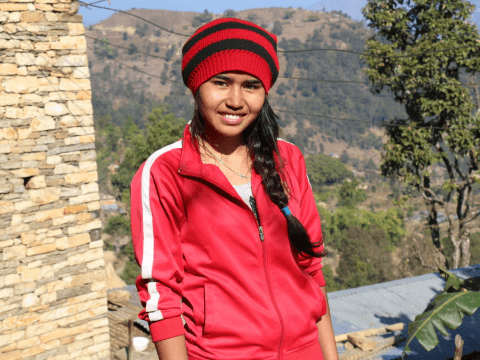Part one: Mamita says no to child marriage

18-year-old Mamita dreams of becoming a nurse and help the marginalised. Mamita lived with her family of six in Lamjung. Her father was working as a labourer in Saudi Arabia. Due to lack of good employment opportunity in Nepal, it is common in Nepal for people, with limited or no educational qualifications, to go to Middle East and other countries to work as labourers.
But at the age of 15, Mamita confronted the biggest obstacle of her life, a decision that would alter her future.
A marriage proposal came knocking on Mamita’s family door. With the thought of having found a good match, her relatives brought the marriage proposal intended for her sister. The climate of festivities quickly turned to an environment of panic when her sister eloped leaving the family in a compromising position. The news of the eloping had started marring the image of the family within their community. Something needed to be done to save the family from losing respect in the society.
Societal ridicule and the inability to provide the basic needs for her children drove her mother, Nirmala’s thoughts to arrive at a precarious decision. Fearing the possibility of her other daughter following in the footsteps of her sister, Nirmala offered 15-year-old Mamita as a substitute bride. Oblivious to the adverse consequences of child marriage uneducated Nirmala thought of blindly following the traditional custom thinking it was perfectly normal to offer Mamita as a fair alternate option.
According to the 2014 UNICEF report, Ending Child Marriage, almost half of all child brides worldwide live in South Asia. Nepal is one of the 10 countries with the highest prevalence of child marriage. 52% of women aged 20 to 49 years were married or in union before ages 15 and 18.
Nirmala left no room for discussion on the matter and expected Mamita to graciously accept the marriage proposal. Crippled with fear, Mamita could not say anything to her mother but within her heart she knew that she did not want to marry early. Knowing that the situation was beyond her, she sought help from the members of her school’s child club, supported by World Vision.
"When I first heard about the news of my marriage I could not comprehend what was happening. I knew that I was too young for marriage and I wanted to study further then become a nurse. I was just 15. It made me sad and depressed and out of fear I could not say anything to my mother."
"I knew there was a child club in my school and they worked on child protection issues. I thought maybe they will be able to help me, counsel me and find a way out. That was my only hope. I was desperate to get any help," says Mamita.
Despite the fear brewing within her, Mamita took the bold step to reach out for help. She approached the children’s club and talked to them about her predicament. After getting the assurance that all measures would be taken to protect her rights as a child, Mamita sighed a sigh of relief. The children’s club sought the support of local authorities and attempted to counsel Mamita’s mother on the issue of child marriage. Mamita had finally found her ray of hope.
As part of the awareness programme, the child club receive orientation from World Vision on child protection issues, such as child marriage, child labour, child abuse etc.
School child clubs also work for schools' issues such as cleanliness, attendance, studies, extracurricular activities, awareness programmes, street dramas etc. They learn that child marriage is illegal and that boys and girls are not mature enough to get married before the age of 20. The child club members are also trained by World Vision on who to contact when child protection issues are raised.
They first contact concerned authorities such as District Child Welfare Board and Village Child Protection and Promotion Committee and report about the proposed child marriage. The child club members also directly go there and talk with the authorities and they coordinate to fix a time and date to meet the family of the proposed bride or groom to advise them.
Read part two to find out how the child club helped Mamita out of her predicament